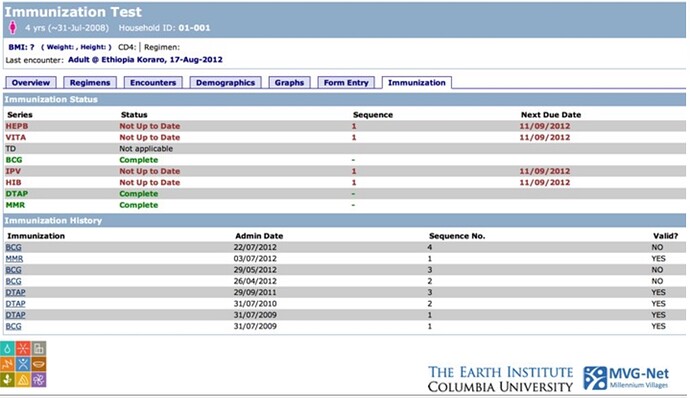Hello All,
We have been working on introducing an Immunization Widget in the Microfrontend Community.
We have a question similar to the one raised by @ssmusoke . We want to track the different doses for a vaccine, However we would like to also track schedule vaccines where the tracking doesn’t happen as dose-0/dose-1/dose-2 etc, but instead 2-Months/4-Months, 6-Months etc.
To do that, going with the similar approach as mentioned by @ball , we can add another sequence for scheduled vaccines as:
As of now we see two sequences:
dose sequence => 0,1,2,3...9
booster sequence => 11,12,13....19
(additional) scheduled sequence => 21,22,23,24,... etc
However we don’t know if there is a definite number of schedules for all vaccines. E.g, For a vaccine it could be (2 Months, 4 Months, 6 Months) and for another it could be (2 weeks, 5 weeks, 10 weeks) and totally different for another vaccine. So it will be hard to have a predefined fix number of schedules.
To overcome this problem we were thinking of changing the approach slightly. Instead of coming up with a general mapping of sequence numbering and labels these could be specific to vaccine. E.g.:
{
"vaccineName": "Some Vaccine",
"vaccineUuid": "XYZ",
"sequence": [{"doseLabel": "label.2months","doseNumber": 1},{"doseLabel":"label.4months","doseNumber": 2}]
OR
"sequence": [{"doseLabel": "label.2Weeks","doseNumber": 1},{"doseLabel": "label.5weeks","doseNumber": 2}]
OR
"sequence": [{"doseLabel": "label.dose1","doseNumber": 1},{"doseLabel": "label.dose2","doseNumber": 2}]
}
Another idea we were having, if there is a way this information could be defined in the vaccine concept ? Probably using (set-members/coded-anwers/attributes). This could be useful in case we want to use this mapping information at different places(MF widgets, RefApp widgets etc). Otherwise we would have to duplicate. @akanter We would like to hear from you on this point.
Let us know if there are any recommendations/suggetions.
CC: @mksd @ibacher @jdick @dkayiwa @mksrom @vasanth2019


